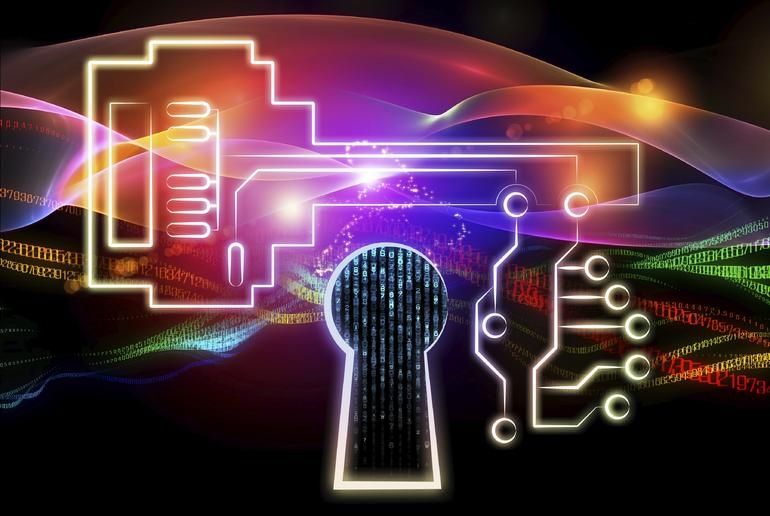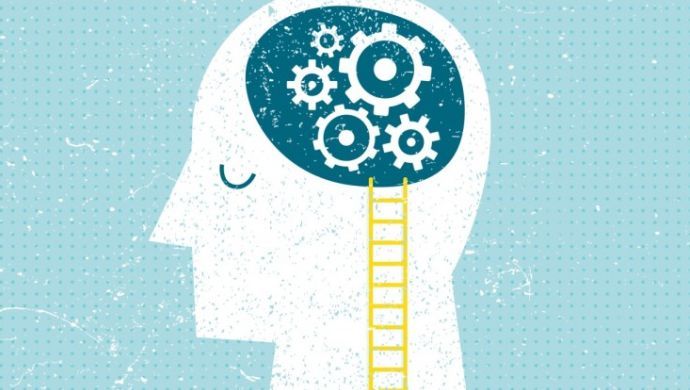Hmmm; ok.
Artificial intelligence visionaries from academia, government and industry meet to discuss how to responsibly integrate ever-evolving AI technology into the real world in such a way that all can benefit.


Always a trickle down effect on things that improve or change. Just reconfirms and reminds us organically how everything is indeed connected.
Capital tends to have greater value the more skilled and educated the workforce. Anticipating genetically enhanced workers would cause firms to want to invest more now in new equipment and buildings. Many assets, such as real estate and intellectual property, become more valuable the richer a society and so expectations of a much higher economic growth rate would cause companies to spend more buying and developing these assets so that businesses, as well as governments, will wish to borrow more when they realize the potential of human genetic engineering.
Many individuals will reduce their savings rate in anticipation of a future richer society. Today, fear that Social Security won’t survive motivates many Americans to save, but this fear and so this incentive for saving would disappear once genetic engineering for intelligence proves feasible. Furthermore, many citizens would rationally expect future government benefits to senior citizens to increase in a world made richer by genetic engineering and this expectation would reduce the perceived need to save for retirement.
Since understanding the consequences of a smarter workforce will increase the desire to borrow but reduce the wish to save, real interest rates will have to go up. These higher rates will reduce incentives to borrow while increasing the willingness to save and so will restore equilibrium to money markets. Expect to see higher interest rates as soon as markets price in embryo selection and genetic engineering.

Over 20 years ago, I was interviewed by a group that asked me about the future of technology. I told them due to advancements such as nanotechnology that technology will definitely go beyond laptops, networks, servers, etc.; that we would see even the threads/ fibers in our clothing be digitized. I was then given a look by the interviewers that I must have walked of the planet Mars. However, I was proven correct. And, in the recent 10 years, again I informed others how and where Quantum would change our lives forever. Again, same looks and comments.
And, lately folks have been coming out with articles that they have spoken with or interviewed QC experts. And, they in many cases added their own commentary and cherry picked people comments to discredit the efforts of Google, D-Wave, UNSW, MIT, etc. which is very misleading and negatively impacts QC efforts. When I come across such articles, I often share where and why the authors have misinformed their readers as well as negatively impacted efforts and set folks up for failure who should be trying to plan for QC in their longer term future state strategy so that they can plan for budgets, people can be brought up to date in their understanding of QC because once QC goes live on a larger scale, companies and governments will not have time to catch up because once hackers (foreign government hackers, etc.) have this technology and you’re not QC enabled then you are exposed, and your customers are exposed. The QC revolution will be costly and digital transformation in general across a large company takes years to complete so best to plan and prepare early this time for QC because it is not the same as implementing a new cloud, or ERP, or a new data center, or rationalizing a silo enterprise environment.
The recent misguided view is that we’re 30 or 50 years away from a scalable quantum chip; and that is definitely incorrect. UNSW has proven scalable QC is achievable and Google has been working on making a scalable QC chip. And, lately RMIT researchers have shared with us how they have proven method to be able to trace particles in the deepest layers of entanglement which means that we now can build QC without the need of analog technology and take full advantage of quantum properties in QC which has not been the case.
So, sharing these three news releases for my QC friends to share with their non-believers and the uninformed.
http://www.zdnet.com/article/googles-quantum-computer-inches-nearer-after-landmark-performance-breakthrough/
https://www.sciencedaily.com/releases/2015/10/151030153108.htm


Government GPS now has a new backup approach.
The Defense Advanced Research Projects Agency plans to demonstrate a positioning, navigation and timing system that will use very low frequency band signals as backup in case military forces lose access to GPS networks.
Lin Haas, DARPA strategic technology officer, discussed the Spatial, Temporal and Orientation Information in Contested Environments project at DARPA Demo Day, the U.S. Army said May 19.
DARPA plans to demonstrate the STOIC system by fiscal year 2018 or 2019 while an at-sea demo will be conducted this year.
All is promising for Biometrics and biometric informatics; however, the technologies to date leveraged in IoT and other environments for parsing, analysis (especially predictive analysis), as well as better presented needs to be improved to be of value. We have seen great progress in the collection of the information and for some basic identification capabilities it looks good; however, to truly be effective and of value we need a lot more work done in this space especially when you look at today’s landscape of collecting information in areas of IoT and processing/ analysis with big data.
The global biometrics market is projected to cross US $ 24.8 billion by 2021. Fingerprint recognition biometric systems are the most preferred type of biometric systems used across the globe, owing to their ease of use, low cost, high speed and accurate results.
Biometric systems are used across various public as well as private offices for enhancing the security of data and information, as these systems provide an accurate validation as compared to traditional methods such as ID cards, PINs, passwords, etc. Increasing use of biometrics in e-commerce and cloud computing solutions, coupled with initiatives taken by the government of various countries across the world to adopt biometrics systems for identification and verification purposes are some of the major factors driving demand for biometric solutions, globally.
Moreover, introduction of e-passports and e-visas, use of biometrics in criminal identification, increasing demand for smartphones integrated with biometric technologies and implementation of biometric technology in election administration are anticipated to drive the global biometrics market over the next five years.


Good write up by Peter on Neil Jacobstein’s perspective on AI. Peter never disappoints in his articles.
Singularity University is part business incubator and part think tank founded by Peter Diamandis and Ray Kurzweil in 2008 in the NASA Research Park in Silicon Valley. Among the topics that have risen in prominence in the curriculum of the University is artificial intelligence.
Neil Jacobstein is a former President of Singularity University, and currently he chairs the Artificial Intelligence and Robotics Track at Singularity University on the NASA Research Park campus in Mountain View California. We recently spoke, and the conversation covered his thoughts on how AI can be used to augment current human capability, strategies technology executives should use to think about AI, the role the government should play in helping mitigate the potential job losses from AI, his perspectives on the dangers of artificial intelligence that have been expressed by major thought leaders, advice on how to train workers to be prepared for the coming wave of AI, and a variety of other topics.
(To listen to an unabridged audio version of this interview, please click this link. This is the sixth interview in my artificial intelligence series. Please visit these links to interviews with Mike Rhodin of IBM Watson, Sebastian Thrun of Udacity, Scott Phoenix of Vicarious, Antoine Blondeau of Sentient Technologies, Greg Brockman of OpenAI, and Oren Etzioni of the Allen Institute for Artificial Intelligence.)

Now this is going to be very interesting. We will learn a lot about self control, stress, and how cultural condition definitely applies to how people handles different forms and types of stress. Cannot wait to see the results of this study. And, with the government taking these first steps may actually show hope.
China’s mental health record is tarred by social stigma and a lack of resources. While public initiatives are now seeking to rectify the issue, the country’s active startup ecosystem is also competing to fill the gaps.
According to a study published in 2011, a staggering 91.8 per cent of Chinese people with a mental health diagnosis never seek help. Part of that has to do with the shortage of trained mental health professionals in China, as well as the country’s psychiatrist-to-patient ratio, which is as low as 1.24 per 100,000 patients, compared to the global average of 4.15 per 100,000.
“The problem is huge,” says Jin Hsueh, the co-founder and CEO of KaJin Health, a Taiwanese startup that provides an online counseling service to people in Chinese-speaking communities. “There are [90] million [people with] depression in China, and very, very [few] that ever seek for help, talking to a doctor or therapist.”

Boy; wait until next month with China’s Quantum Launch.
By Munish Sharma.
Cyber has been one of the key discussion items during both Prime Minister Modi’s just concluded visit to the United States and President Xi Jinping’s visit to the US some nine months back. After Xi’s visit, China and the US signed a Cyber Agreement in October 2015. India and the US will ink a cyber agreement in the next sixty days. Notwithstanding these similarities, the intent of and expectations from these two agreements are fundamentally different; the former is an attempt to manage insecurity and the latter is a quest for security. An analysis of the joint statements issued at the end of the Modi and Xi visits to the US highlights the contrasting differences in India and China’s bilateral ties with the United States in the cyber realm.
China : US – Cyber and State Visit
Xi Jinping’s state visit to the US took place in the shadow of a massive cyber-attack on the Office of Personnel Management (December 2014), which compromised the fingerprint records of 5.6 million people and Social Security numbers and addresses of around 21 million former and current government employees. 1 The US has been accusing China of theft of intellectual property targeted against its defence industries, private sector and key governmental functions; amounting to economic espionage. Accusations in this regard go back to 2004, when a series of coordinated attacks – dubbed as Titan Rain – targeted the computer networks of Lockheed Martin, Sandia National Laboratories, Redstone Arsenal, and NASA. Cyber espionage featured in every high-level talk and security report.